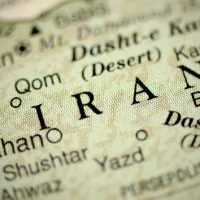 NASA/Twitter(NEW YORK) — 2014 has been a year of picture-perfect, out-of-this-world moments and incredible firsts in space exploration.
NASA/Twitter(NEW YORK) — 2014 has been a year of picture-perfect, out-of-this-world moments and incredible firsts in space exploration.
The European Space Agency landed a probe on a speeding comet and NASA celebrated a successful maiden voyage of “America’s spacecraft,” Orion.
Among the triumphs, there was also tragedy.
Here are seven moments from 2014 that defined the year in space travel, exploration and appreciation.
1. Philae Lands on Comet 67P
It’s an image billions of years in the making.
After a decade-long journey spanning nearly 400 million miles, the Philae lander separated from the Rosetta spacecraft and landed on a speeding comet — not once or twice but three times.
After bouncing twice, the lander came to rest against a walled area, obstructing its solar panels from sunlight, said Philae Lander Manager Stephan Ulamec.
“The not-so-good news is that the anchoring harpoons did not fire, so the lander is not anchored to the surface,” Ulamec said.
However, the mission was still a resounding success, transmitting the first-ever photos from the surface of a comet and conducting new experiments that could yield insight about the origins of the solar system.
2. Rosetta Spacecraft’s Philae Probe Pulls Off Comet Landing
NASA awarded contracts in September to Boeing and Elon Musk’s SpaceX to ferry astronauts to and from the International Space Station, signaling the agency’s return to manned spaceflight after the end of the space shuttle program.
The winning designs will end U.S. dependence on the Russian Soyuz for transportation back and forth to the International Space Station.
“This is the fulfillment of the commitment President Obama made to return human space flight launches to U.S. soil and end our reliance on the Russians,” NASA administrator Charles Bolden said.
3. Virgin Galactic’s Fatal Crash
Virgin Galactic’s SpaceShipTwo broke up over the Mojave Desert in California after being released from a carrier aircraft at high altitude.
It could be as long as a year before federal investigators have any answers about what caused the Virgin Galactic spacecraft crash, which killed one co-pilot and left another injured.
Among the causes being explored are pilot error, mechanical failure and the design of the spacecraft.
National Transportation Safety Board Acting Chairman Christopher Hart said in a November briefing that investigators found the feathering system that slows the spacecraft’s descent was deployed before it reached the appropriate speed, however it was unclear how that factored into the crash.
Sir Richard Branson, founder of the Virgin Group, said “safety has guided every decision” Virgin Galactic has made over the past decade and vowed that the company’s dream of commercial space travel would continue.
4. Antares Rocket Explosion
Within seconds of launching, the Antares rocket, which was destined for a supply mission to the International Space Station, exploded into a fireball over Wallops Island, Virginia.
Orbital Sciences, which owned the Antares rocket and Cygnus spacecraft, cited a “vehicle anomaly” for the failed launch.
5. Orion Blasts Off on Test Mission
We’re one step closer to sending a manned mission to Mars.
Orion’s maiden voyage on Dec. 4 was picture perfect from the moment it launched from Florida until it splashed down four and a half hours later in the Pacific Ocean.
During its journey, the space capsule passed a series of milestones, flying through the Van Allen radiation belts and even managing to send live video of the entire globe back to Earth — the first time this has happened since Apollo 17 in 1972.
The spacecraft, which has seats for four astronauts, orbited Earth twice at an altitude of 3,600 miles before splashing down 600 miles off the coast of California, where it was recovered by the U.S. Navy.
6. Astronauts Tweet Stunning Photos from International Space Station
Social media savvy astronauts at the International Space Station shared details of life in microgravity and some incredible snaps taken from their home in low Earth orbit.
During his stay at the International Space Station, astronaut Alexander Gerst tweeted a photo showing what the conflict between Israel and Gaza looked like in July.
“My saddest photo yet. From #ISS we can actually see explosions and rockets flying over #Gaza & #Israel,” he wrote.
While Gerst’s photo was somber, there were other lighter moments showing life at the ISS. For starters, we learned all about the chores schedule from Italian astronaut Samantha Cristoforetti.
7. Incredible Year for Eclipses
The year brought a calendar packed with gorgeous eclipses — including two gorgeous blood red moons.
The special lunar eclipse happens when Earth positions itself between the sun and the moon, casting a majestic red hue.
Here’s something to look forward to in 2015: You’ll have two more chances to catch a blood moon. The next total lunar eclipse will be on April 4, 2015, according to NASA.
Follow @ABCNewsRadio
Copyright 2014 ABC News Radio















